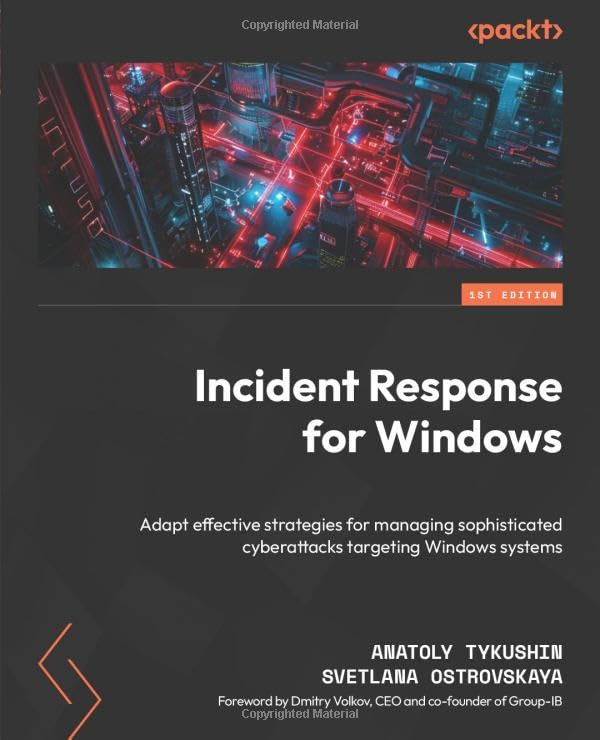dEEpEst
☣☣ In The Depths ☣☣
Staff member
Administrator
Super Moderator
Hacker
Specter
Crawler
Shadow
- Joined
- Mar 29, 2018
- Messages
- 13,861
- Solutions
- 4
- Reputation
- 27
- Reaction score
- 45,548
- Points
- 1,813
- Credits
- 55,350
7 Years of Service
56%
Incident Response for Windows
Adapt effective strategies for managing sophisticated cyberattacks targeting Windows systems

Get to grips with modern sophisticated attacks, their intrusion life cycles, and the key motivations of adversaries, and build the most effective cybersecurity incident preparedness, response, remediation, and prevention methodologies
Key Features
- Explore contemporary sophisticated cyber threats, focusing on their tactics, techniques, and procedures
- Craft the most robust enterprise-wide cybersecurity incident response methodology, scalable to any magnitude
- Master the development of efficient incident remediation and prevention strategies
- Purchase of the print or Kindle book includes a free PDF eBook
Book Description
Cybersecurity incidents are becoming increasingly common and costly, making incident response a critical domain for organizations to understand and implement. This book enables you to effectively detect, respond to, and prevent cyberattacks on Windows-based systems by equipping you with the knowledge and tools needed to safeguard your organization's critical assets, in line with the current threat landscape.The book begins by introducing you to modern sophisticated cyberattacks, including threat actors, methods, and motivations. Then, the phases of efficient incident response are linked to the attack's life cycle using a unified cyber kill chain. As you advance, you'll explore various types of Windows-based platform endpoint forensic evidence and the arsenal necessary to gain full visibility of the Windows infrastructure. The concluding chapters discuss the best practices in the threat hunting process, along with proactive approaches that you can take to discover cybersecurity incidents before they reach their final stage.
By the end of this book, you’ll have gained the skills necessary to run intelligence-driven incident response in a Windows environment, establishing a full-fledged incident response and management process, as well as proactive methodologies to enhance the cybersecurity posture of an enterprise environment.
What you will learn
- Explore diverse approaches and investigative procedures applicable to any Windows system
- Grasp various techniques to analyze Windows-based endpoints
- Discover how to conduct infrastructure-wide analyses to identify the scope of cybersecurity incidents
- Develop effective strategies for incident remediation and prevention
- Attain comprehensive infrastructure visibility and establish a threat hunting process
- Execute incident reporting procedures effectively
Who this book is for
This book is for IT professionals, Windows IT administrators, cybersecurity practitioners, and incident response teams, including SOC teams, responsible for managing cybersecurity incidents in Windows-based environments. Specifically, system administrators, security analysts, and network engineers tasked with maintaining the security of Windows systems and networks will find this book indispensable. Basic understanding of Windows systems and cybersecurity concepts is needed to grasp the concepts in this book.Table of Contents
- Introduction to the Threat Landscape
- Understanding the Attack Life Cycle
- Phases of an Efficient Incident Response on Windows Infrastructure
- Endpoint Forensic Evidence Collection
- Gaining Access to the Network
- Establishing a Foothold
- Network and Key Assets Discovery
- Network Propagation
- Data Collection and Exfiltration
- Impact
- Threat Hunting and Analysis of TTPs
- Incident Containment, Eradication, and Recovery
- Incident Investigation Closure and Reporting